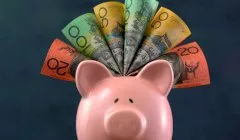Retirement
SMSFs are shunning direct shares in favour of property – but is this a good idea?
Retirement
SMSFs are shunning direct shares in favour of property – but is this a good idea?
For several years, SMSFs allocation to direct shares has been in decline. This trend accelerated after COVID.
SMSFs are shunning direct shares in favour of property – but is this a good idea?
For several years, SMSFs allocation to direct shares has been in decline. This trend accelerated after COVID.

According to the 2020 Investment Trends research, in 2013 trustees allocated 45 per cent of their portfolios to shares. Today, that allocation is down to 31 per cent. This means more allocation to property, which is no surprise considering the Australian mentality that property is a secure investment that will yield good returns over time.
However, an SMSF investor should always consider their time frame from retirement because this will have an impact on the type of property they invest in. It’s also important that there’s enough diversification in any portfolio and the expense of property could mean a heavily weighted portfolio instead of even distribution across asset types and classes.
Actual returns are different to ABS figures
ABS figures in 2019 revealed an increase of 7 per cent per annum for dwellings in capital cities in Australia over the last 32 years. Figures like this sway all types of investors, but it’s important to note that the 7 per cent p.a. increase fails to account for the cost of renovations, improvements and maintenance.

For example, imagine a house being purchased for $245,000 in 1986. If no work was done on it, and then it was sold 32 years later for a land value of $1 million, the ABS would record a price increase of 4.6 per cent p.a. over 31 years.
Since the house is run-down, the new owners knock it down and spend $1 million building a new house on the land. If the property then sells for $2 million, the ABS will record that as a 100 per cent price increase over 12 months, and will list a new 7 per cent p.a. increase for the property ($245,000 to $2 million).
However, the actual return – after taking into account the $1 million spent on rebuilding the house – would be just 4.5 per cent p.a.
A property may not require major renovations, but over time, bathrooms and kitchens might need updating or replacing, while decks, pools and gardens also need ongoing maintenance. There are ongoing costs like council rates, body corporate fees (if applicable), as well as water and insurance.
Additionally, there are also the transaction costs of buying and selling a property. The RBA estimates that the costs of buying a house (including stamp duty, conveyancing, etc) is around 4 per cent of the value of the property.
The cost of selling a house includes real estate agent commissions and advertising which all add up to about 3 per cent. Thus, the total costs of buying and selling a house are in the vicinity of 7 per cent of the total value of the property.
Investment properties and rental yields
The gross yield (rent) on houses in capital cities in Australia is 2.8 per cent and 3.8 per cent for units, according to SQM Research. However, there are substantial running costs which need to be taken into account to arrive at net yield.
Investment properties attract council rates, management fees, property maintenance and repairs. And if the property value is above the land tax threshold, there will also be land tax to pay each year.
Short-term rentals can yield more than a long-term tenant due to the higher fees to stay for a night. And it’s true – there’s been a boom in the short-term rental market thanks to platforms like Airbnb and Stayz, but competition is fierce and the tourism landscape has changed dramatically.
Tax benefits of owning property may be disappearing
Hanging out for capital gains rather than rental yield? Bearing in mind that the property dwelling itself will depreciate over time by around 2.5-4 per cent per year, the capital gain will be based on the value of the land which has historically increased by between 4-5 per cent per year.
Once the annual losses are offset against the likely capital gain on sale, the typical long-term return on an investment property in Australia has been marginal.
What about investing in other assets?
It’s worth considering all options to invest your hard-earned money, and whether an alternative to property may be better suited to your goals.
All of these factors don’t mean property doesn’t have a place in a properly diversified portfolio. But a problem arises if the cost of the property or properties weights a portfolio too heavily towards one asset.
As any sensible financial adviser will tell you, holding a diversified portfolio that includes shares, bonds and commodities like gold will allow you to access smoother returns rather than simply putting all your eggs into the property basket.
Chris Brycki is the chief executive of Stockspot.

Self managed super fund
Superannuation guarantee to be paid on government paid parental leave, says ASFA
The Association of Superannuation Funds of Australia (ASFA) has hailed the government's decision to include Superannuation Guarantee payments with its Paid Parental Leave policy as a critical step ...Read more

Self managed super fund
SMSF experts advise against hasty reactions to potential super tax changes
As the Australian Government proposes a new tax measure on superannuation earnings for balances exceeding $3 million, experts from the self-managed super funds (SMSF) sector are urging members not to ...Read more

Self managed super fund
Federal government announces changes to superannuation contribution caps
The Federal Government has announced changes to the superannuation contribution caps, impacting self-managed super funds (SMSFs) and their members from 1 July 2024. Read more

Self managed super fund
SMSF Association calls for joint effort to tackle early super access
The SMSF Association is calling on a collaborative approach including the Government, the Australian Taxation Office (ATO), the Australian Securities and Investments Commission (ASIC), and the ...Read more

Self managed super fund
Rest Super members file class action over alleged insurance premium deductions
Shine Lawyers has initiated a class action lawsuit against Rest Superannuation (Rest), alleging the unlawful deduction of income protection insurance premiums from members' superannuation accounts. Read more

Self managed super fund
Debunking a superannuation tax myth: SMSF Association clarifies the impact on Aussie farms
In the ongoing debate about a proposed new tax targeting superannuation funds exceeding $3 million, the SMSF Association has stepped in to challenge claims from the Association of Superannuation Funds ...Read more

Self managed super fund
Is an SMSF right for you?
When it comes to planning for retirement, one of the most significant decisions Australians have to make is how to manage their superannuation. Read more

Self managed super fund
SMSF growth continues after pandemic peak
The statistics have begun to change coming out of the COVID-19 pandemic, according to new findings from Australian Investment Exchange Limited (AUSIEX). Read more

Self managed super fund
Superannuation guarantee to be paid on government paid parental leave, says ASFA
The Association of Superannuation Funds of Australia (ASFA) has hailed the government's decision to include Superannuation Guarantee payments with its Paid Parental Leave policy as a critical step ...Read more

Self managed super fund
SMSF experts advise against hasty reactions to potential super tax changes
As the Australian Government proposes a new tax measure on superannuation earnings for balances exceeding $3 million, experts from the self-managed super funds (SMSF) sector are urging members not to ...Read more

Self managed super fund
Federal government announces changes to superannuation contribution caps
The Federal Government has announced changes to the superannuation contribution caps, impacting self-managed super funds (SMSFs) and their members from 1 July 2024. Read more

Self managed super fund
SMSF Association calls for joint effort to tackle early super access
The SMSF Association is calling on a collaborative approach including the Government, the Australian Taxation Office (ATO), the Australian Securities and Investments Commission (ASIC), and the ...Read more

Self managed super fund
Rest Super members file class action over alleged insurance premium deductions
Shine Lawyers has initiated a class action lawsuit against Rest Superannuation (Rest), alleging the unlawful deduction of income protection insurance premiums from members' superannuation accounts. Read more

Self managed super fund
Debunking a superannuation tax myth: SMSF Association clarifies the impact on Aussie farms
In the ongoing debate about a proposed new tax targeting superannuation funds exceeding $3 million, the SMSF Association has stepped in to challenge claims from the Association of Superannuation Funds ...Read more

Self managed super fund
Is an SMSF right for you?
When it comes to planning for retirement, one of the most significant decisions Australians have to make is how to manage their superannuation. Read more

Self managed super fund
SMSF growth continues after pandemic peak
The statistics have begun to change coming out of the COVID-19 pandemic, according to new findings from Australian Investment Exchange Limited (AUSIEX). Read more








